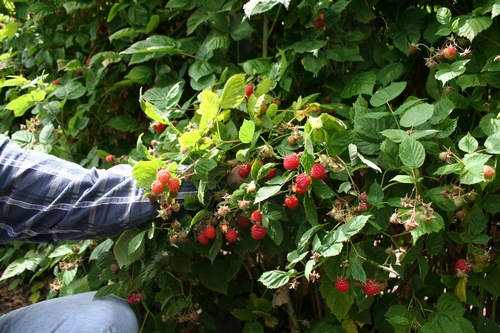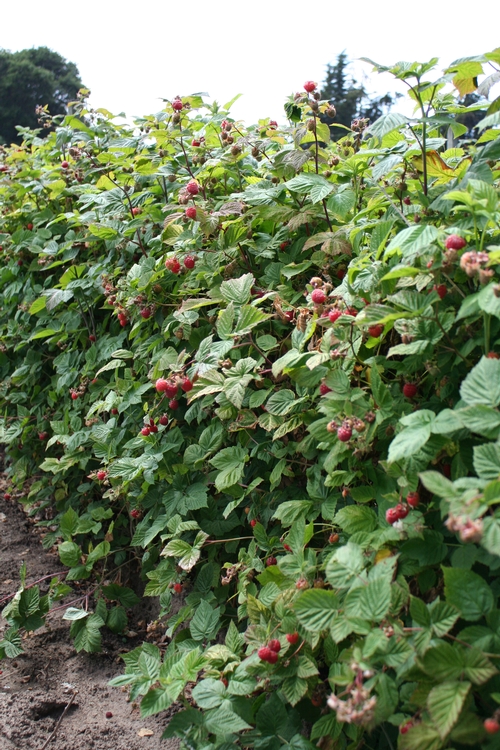There have been now two field closures over the past week in the Watsonville-Salinas berry production district, and the following is meant to make some sense to growers for what to do to minimize losses in the event of a leafroller larva detection.
USDA inspectors are not agriculturalists, nor pest managers for that matter. We in the industry should be aware that they are bound by a set of rules that at times may seem at odds with sound pest management, but it yet is incumbent upon us as professionals to work with them and come out with the best solution for both parties which is the elimination of leafrollers and re-opening of the field with as little impact to the normal management of the field as possible.
Growers should be aware that outside of the USDA inspections taking place monthly at each cooler, fruit sent for export out of the USA is being sampled and inspected by county personnel. They have long done this to look for pathogens and other insects and recently this repetoire has been including leafroller larvae. On finding a suspect larva, the county inspector forwards it to USDA inspectors, who will make an identification of the larva if possible at the cooler and also forward it on to the DNA identification laboratory in Sacramento. The process from find to absolute positive identification at the DNA lab is about a week, but can take longer in the case of very small larvae or pupae.
It appears that growers are advised of a possible LBAM find on the same day, and a hold is put on the source field. Inspectors will pay a visit to the hold field to find larvae, which they inevitably do. Now, the grower has the option of re-routing fruit from the field under the hold order to clients within the quarantine area or destroying it. Both have happened this last week. It is truly tragic when another market cannot be found for fruit, but such is the nature of this quarantine.
Once advised of the hold, arrangements are made to have inspectors observe a pesticide application of the infested field with the purported goal of controlling LBAM. In the interest of time, the process of arranging a pesticide application and field re-inspection is allowed to move forward even in the absence of a full positive identification for LBAM. Time of initial suspect LBAM find to time of observed spray seems to depend on a number of factors, but generally happens within a week.
In berries, the list of allowed pesticides for inspector observed, mandated sprays is unfortunately rather short. For strawberry growers, fortunately Intrepid, Entrust and several Bt formulations are included, but notably Coragen, Success and Radiant, which are highly effective and actually have light brown apple moth on their labels along with being pretty soft on beneficials and the surrounding environment, are not allowed. Instead, we are additionally allowed crude materials such carbaryl (7 day pre-harvest interval, pollinator caution, devastating to beneficials), and chlorpyrifos (21 day pre-harvest interval, seriously harmful to beneficials). A superior type horticultural oil is allowed, but only at a minimum rate of 1% volume to volume, which for a petroleum distillate is pretty risky in sensitive crops like strawberries or caneberries.
Once the approved pesticide application is done, arrangements are made to have the field re-inspected in the interests of confirming that it has been cleared of leafroller larvae and re-opening it. This is a rather important point for berry growers, because when this happens depends on what material that has been applied. Based on our experience, inspections have been taking place one day after an application of Entrust, and more than several days after Bt formulations. If you are willing to take a chance of burning your plants and fruit, the superior type oils also are supposed to give one day. Intrepid and Confirm as insect growth regulators (IGR's) are known to act more slowly so again garner a re-inspection after more than a few days.
It seems in light of all of the above, the strategy that berry growers should be taking in relation to leafroller management should be as per the following:
1- Keep fields clear of leafrollers. Period.
2- In the unfortunate event of a possible LBAM find and hold on the field, spray the field IMMEDIATELY with the very effective and labeled materials such as Coragen or Radiant in strawberries and Delegate in caneberries. By doing so, you are giving these materials time to act in full while you make arrangements for inspections and sprays with the USDA.
3- Make arrangements for mandated spray with the USDA.
4- Make application of Entrust since you should be able to get inspectors in the next day to confirm that it has cleared the field of leafrollers.
5- Undergo inspection from USDA to re-open field. Note that your spray of the better material from the day of the hold will now have taken full effect along with the effects of the Entrust, and you should by now have dramatically reduced, if not eliminated, leafroller larvae from your field.
There are pesticides mentioned for management of leafrollers and light brown apple moth in this article. Before using any of these products, check with your local Agricultural Commissioner's Office and consult product labels for current status of product registration, restrictions, and use information.
Attached Images:

This fruit will not be harvested because of field closure.

This whole field of fruit is lost because of a hold order.